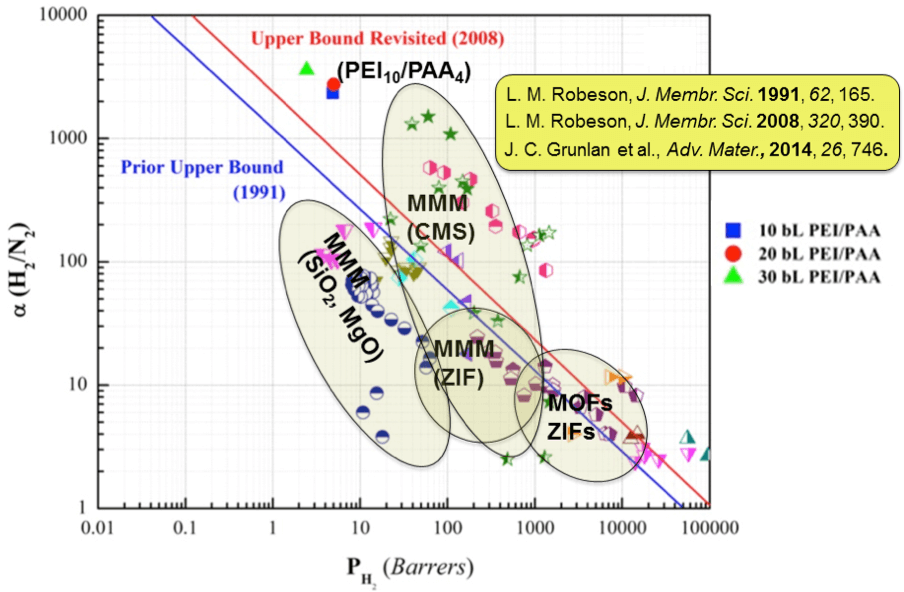The production of inexpensive, high purity hydrogen remains a critical challenge to improving the sustainability of fossil fuels and for realizing renewable and clean energy sources capable of displacing fossil fuels. Polymeric gas separation membranes combining low production costs with robust mechanical properties have found broad industrial application for O2 and N2 enrichment of air, upgrading of natural gas and hydrogen recovery from ammonia. In the absence of structure (i.e. in amorphous glassy or rubbery films), increasing the free volume of size-selective polymer membranes improves the permeability at the cost of reducing the permselectivity. This translates to an upper bound in separation performance achievable by dense, homogeneous and amorphous polymeric films. We recently demonstrated that layer-by-layer (LbL) deposition provides a robust, low-cost means to introduce size-selective functionality via manipulation of polymer processing conditions. Extension of the LbL assembly technique to gas purification membranes promises the ability to tune overall gas permeability and permselectivity through manipulation of film nanostructure by varying deposition conditions. The alternate deposition of branched polyethylenimine (PEI) and poly (acrylic acid) (PAA) produces a “scrambled salt” structure, resulting in a highly interpenetrating network of high density which exhibits size selective gas separation in excess of Robeson’s ‘upper boundary’ (Advanced Materials 2014), which we attribute to the structure imparted by a high degree of ‘ionic-crosslinking.’ Specifically, this ionically crosslinked assembly exhibits H2/N2 and H2/CO2 selectivities in excess of 1000:1 and 100:1, respectively, which are superior to the properties of any organic, inorganic or mixed-matrix membrane outside of dense metallic (e.g. Pd) or electroceramic (e.g., BaYxCe1-xO3) films reported in the open literature. This unique thin film overcomes the drawbacks of common polymeric membranes (i.e., low selectivity and poor mechanical properties), making it a significant advance in polymeric membranes for gas separation.

